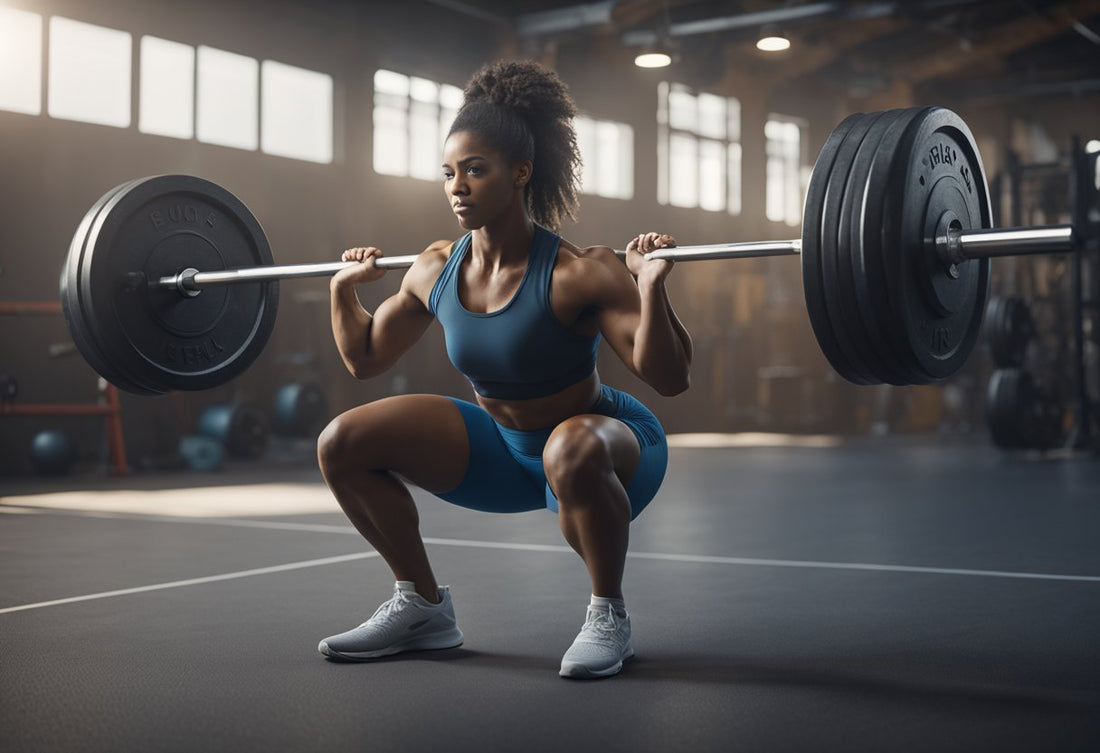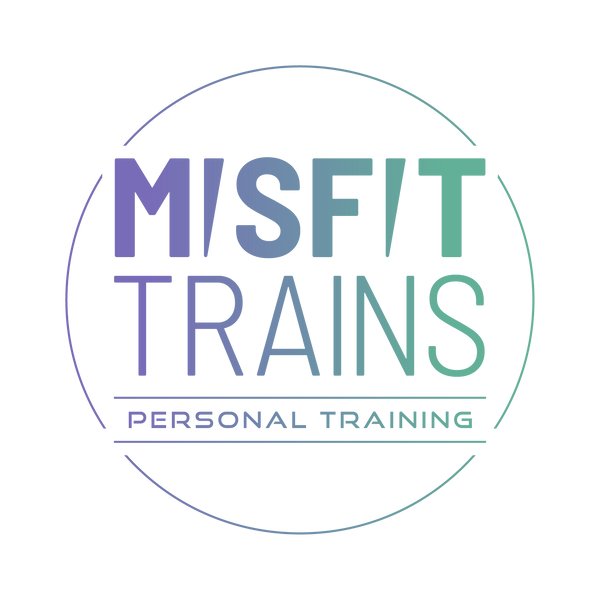
Let's Talk About: Squats
Share
So you're ready to take on the barbell squat? Congratulations, you're about to embark on one of the best exercises for building strength and muscle in your lower body. But before you dive in, it's important to make sure you're using the correct form to avoid injury and get the most out of the exercise.
First things first, let's talk about the basic barbell squat form. Start by standing with your feet shoulder-width apart, toes pointing slightly outwards. Place the barbell on your upper back, making sure it's resting on your traps and not your neck. Keep your chest up, engage your core, and slowly lower your body down by bending your knees and pushing your hips back. Make sure to keep your back straight, a little knees over toes may be okay depending on your anatomy, but while you're starting try to avoid your knees going over your toes. Then, push through your heels to return to the starting position. Simple, right?
But wait, there's more! Did you know there are different variations of the barbell squat? From front squats to box squats, each variation targets different muscles and can add some variety to your workout routine. So, let's dive into the correct form and benefits of each variation to help you choose which one to add to your next leg day.

Squatting 101: The Basics of Form
So, you've decided to take on the mighty barbell squat. Good for you! But before you start piling on the plates, let's go over some basic form to ensure you don't end up looking like a wobbly jellyfish.
Stance and Foot Placement
First things first, let's get your feet sorted. Stand with your feet shoulder-width apart and your toes pointing slightly outwards. This will give you a stable base to work from. As for foot placement, experiment with different positions until you find what feels most comfortable for you.
The Descent: Hips and Knees
As you start to descend, focus on hinging at the hips first. Push your butt back and keep your chest up. This will help activate your glutes and hamstrings and take some pressure off your knees. Speaking of knees, make sure they stay in line with your toes. Don't let them cave inwards or shoot outwards like a rogue missile.
The Ascent: Stand and Deliver
Once you've hit the bottom of your squat, it's time to stand back up. Push through your heels and drive your hips forward. Keep your chest up and your core tight to maintain good form. Don't forget to breathe!
Now that you've got the basics down, it's time to start squatting like a pro. Remember to keep your form tight and don't be afraid to ask for help if you're unsure. Happy squatting!
Muscles worked:
- Quads
- Hamstrings
- Glutes
- Core
- Back
- Chest (if you're doing front squats)
Common mistakes to avoid:
- Letting your knees cave inwards
- Rounding your back
- Not going low enough (aim for parallel or lower)
- Leaning too far forward
- Not breathing properly
The Mighty Muscle Roster
When it comes to barbell squats, it's not just about working your legs. This compound exercise recruits several muscle groups to work together in harmony. Here are the mighty muscles that make up your squatting squad:
Quads and Glutes: The Power Duo
Your quadriceps, or quads for short, are the four muscles located on the front of your thigh. They are responsible for extending your knee joint. The gluteus maximus, or glutes, is the largest muscle in your body and is located in your buttocks. It is responsible for hip extension and external rotation. Together, your quads and glutes work in tandem to power you through your squat.
Core and Back: The Stability Squad
Your core muscles, which include your abs, obliques, and lower back, are responsible for keeping your torso stable during the squat. They work together to prevent your spine from collapsing under the weight of the barbell. Your back muscles, including your erector spinae and latissimus dorsi, also play a role in stabilising your spine and keeping your chest up.
Hamstrings and Calves: The Unsung Heroes
Your hamstrings are located on the back of your thigh and are responsible for knee flexion and hip extension. They work in conjunction with your glutes to power you through the squat. Your calves, located on the back of your lower leg, help to stabilise your ankle joint and provide additional support during the exercise.
Now that you know which muscles are involved in the squat, it's important to make sure you're using proper form to target them effectively. Keep in mind that every variation of the squat will emphasise different muscles to varying degrees. Experiment with different stances and bar placements to find what works best for you and your goals. Happy squatting!
Barbell Squat Variations and Their Superpowers
If you're looking to strengthen your lower body, barbell squats are one of the best exercises you can do. But did you know that there are different types of barbell squats that can target different muscles and provide unique benefits? Here are some variations you should try:
Back Squat: The Classic
The back squat is the most common type of barbell squat and is often referred to as the king of leg exercises. To perform a back squat, you place the barbell on your upper back, behind your neck, and squat down until your thighs are parallel to the ground. This exercise primarily targets your quadriceps, hamstrings, and glutes.
Front Squat: The Challenger
The front squat is a challenging variation that requires good core strength and flexibility. Instead of placing the barbell on your upper back, you hold it in front of your body, resting on your shoulders. This exercise targets your quadriceps, but also engages your core and upper back muscles.
Overhead Squat: The Balancing Act
The overhead squat is an advanced variation that requires excellent balance and mobility. To perform this exercise, you hold the barbell above your head with your arms fully extended and squat down until your thighs are parallel to the ground. This exercise targets your quadriceps, glutes, shoulders, and core.
Goblet Squat: The Accessible One
The goblet squat is a great option for beginners or those who don't have access to a barbell. To perform this exercise, you hold a kettlebell or dumbbell in front of your chest and squat down until your thighs are parallel to the ground. This exercise primarily targets your quadriceps, but also engages your core and upper back muscles.
Each of these barbell squat variations has its own unique benefits and can help you develop strength and muscle in different areas. Experiment with different types of squats to find the ones that work best for you. Remember to always use proper form and start with lighter weights if you're a beginner. Happy squatting!
Accessorising Your Squat: Gear and Gadgets
Congratulations! You've mastered the art of the barbell squat. But why stop there? With the right gear and gadgets, you can take your squat game to the next level. Here are some essential accessories to consider:
Choosing the Right Barbell
Not all barbells are created equal. When selecting a barbell for your squat, consider the following:
- Weight capacity: Make sure the barbell can handle the weight you plan to lift.
- Grip: Look for a barbell with knurling that provides a secure grip.
- Diameter: A thicker barbell can help improve grip strength.
Weight Plates: The Heavy Lifting
Weight plates are a crucial component of any squat routine. Here are some things to keep in mind:
- Material: Choose weight plates made of durable materials like cast iron or steel.
- Weight increments: Look for plates that come in small increments to allow for gradual increases in weight.
- Plate size: Make sure the plates you choose fit your barbell and squat rack.
Squat Rack: Your Iron Throne
A squat rack is an essential piece of equipment for any serious lifter. Here's what to consider when choosing a squat rack:
- Adjustability: Look for a rack with adjustable height and width to accommodate different body types and exercises.
- Sturdiness: Make sure the rack is stable and can handle heavy weights.
- Safety features: Look for a rack with safety pins or straps to prevent injury.
Safety Equipment: No Bruises, Please
Finally, don't forget about safety equipment. Here are some items to consider:
- Weightlifting belt: A weightlifting belt can provide support for your lower back and core.
- Knee sleeves: Knee sleeves can help prevent knee injuries and provide extra support.
- Wrist wraps: Wraps can help improve wrist stability and prevent injury.
With the right gear and gadgets, you can take your squat to new heights. Just remember to always practice proper form and safety. Happy lifting!
Avoiding Squatastrophes: Safety and Common Mistakes
Squatting is a great exercise for building leg and core strength, but it can be dangerous if not done correctly. Here are some tips to avoid 'squatastrophes' and keep yourself safe:
Proper Warm-Up: Don't Skip It!
Before you start squatting, make sure you warm up properly. This will help prevent injury and ensure that you get the most out of your workout. A good warm-up should include some light cardio, such as jogging or cycling, as well as some dynamic stretching to get your muscles ready for the workout ahead.
Spotter or Not: That Is the Question
Whether or not you need a spotter when squatting depends on your experience level and how much weight you're lifting. If you're new to squatting or lifting heavy weights, it's a good idea to have a spotter to help you if you lose your balance or can't complete the lift. If you're an experienced lifter and you're confident in your ability to lift the weight, you may not need a spotter.
Form Faux Pas: The No-Nos of Squatting
There are some common mistakes that people make when squatting that can increase the risk of injury. Here are a few things to avoid:
- Arching your back: Keep your back straight and your core engaged throughout the lift.
- Letting your knees cave in: Make sure your knees stay in line with your toes throughout the lift.
- Lifting your heels: Keep your heels firmly planted on the ground throughout the lift.
- Going too low: Don't try to squat lower than your body allows. This can put too much strain on your knees and lower back.
- Using a barbell pad: These are designed to make the barbell more comfortable on your hips when performing hip thrusts (more on those another day!) not your neck, the pad can force your head forward at a strange angle for your neck, which can lead to discomfort and injury.
By following these tips, you can avoid 'squatastrophes' and get the most out of your squatting workouts. Remember to always listen to your body and stop if you feel any pain or discomfort.
